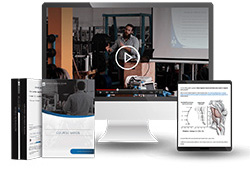Hip thrust and back squat training elicit similar gluteus muscle hypertrophy and transfer similarly to the deadlift [NEW STUDY]

In our new study, we compared how effective squats and hip thrusts are to stimulate lower body growth and strength development. This is the first time this has been done, except for a very shady Brazilian study. Each group performed only squats or only hip thrusts for an otherwise identical program of 9 weeks with 2 supervised workouts per week with 3-6 sets to volitional failure at 8-12RM. The participants were untrained women and men to avoid biasing the results based on previous experience with either lift. There were no significant differences between groups in macronutrient intakes. Both groups were supervised and verbally encouraged during their workouts and provided with a post-workout protein shake to ensure they made good gains. And they absolutely did.
Both lifts were equally effective booty builders for the upper, middle and lower gluteus maximus, as well as total glute size. Neither lift stimulated significant growth in the glute medius and minimus. Squats stimulated more growth in the quadriceps and the inner thighs (adductor longus), but hip thrusts also stimulated significant growth in both parts of the thighs. Neither lift made the hamstrings grow.
Strength-wise, both lifts built deadlift and wall push strength equally well. Squats built more squat strength and hip thrusts built more hip thrust strength, unsurprisingly.

We also collected electromyography (EMG) data to measure glute muscle activity levels. Hip thrusts blew squats out of the water with higher mean EMG levels for all parts of the glutes and also higher peak values for the middle and upper glutes. The subjects also reported feeling their glutes much more during hip thrusts. However, there were absolutely no consistent correlations between either mean or peak EMG levels and muscle growth in those areas, as measured by the gold standard MRI. Both lifts resulted in high glute activity, but our study now clearly shows that we cannot use EMG or subjective muscle sensation as a direct indicator of muscle growth.
This study cost Bret and me a pretty penny and Daniel probably some extra grey hairs, but I’m very pleased with the fruits of our labor. More to come!
 Want more content like this?
Want more content like this?
Then get our free mini-course on muscle building, fat loss and strength.
By filling in your details you consent with our privacy policy and the way we handle your personal data.
